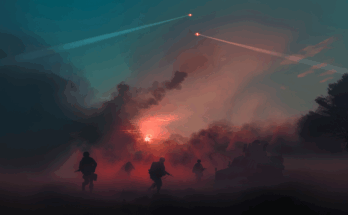
The one near certainty of the C-UAS story is that there will probably never be a single, universal solution to address all the varieties of threats that hostile drone operators can launch into the skies. Versatility and adaptation are the order of the day. In this light, the past month was notable for seeing more emphasis on increasingly prevalent mobile systems and the need for defensive coverage of wider areas.
On October 9, L3Harris Technologies announced the expansion of its VAMPIRE C-UAS systems family into specialized land, maritime, air, and electronic warfare variants. In the latest move, the system has been integrated onto GM Defense’s Infantry Squad Vehicle (ISV). The company also cited new sensor suites, precision weapons, electronic jammers, non-kinetic effects, and AI and machine learning techniques, to join the C-UAS effort.
In another strong move toward C-UAS mobility, October 9 saw General Dynamics Land Systems (GLDS) partnering with Epirus to introduce the TRX Leonidas, a merging of Epirus’ Leonidas high-power microwave (HPM) platform with GDLS’ Tracked Robot 10-ton (TRX) unmanned ground vehicle.
Earlier in the month, and citing a rise in unidentified drone activity, Denmark’s Terma on October 2 announced its help in deploying an integrated C-UAS solution across multiple strategic locations, protecting critical infrastructure and military installations. The company’s solution includes a suite of SCANTER radars, combined with Ultra-High Definition Electro-Optical and Infrared cameras, and other situational awareness systems.
On October 6, C-UAS developer DroneShield announced a $13 million investment in a new research and development facility in Adelaide, South Australia, focused on radio frequency (RF) electronics, EW, and systems integration.
Around the same date, Fortem Technologies announced it had received purchase orders for twelve of its C-UAS products from U.S. allies in Europe and the Middle East, to protect critical defense installations in both regions. According to Fortem, its AI-enabled SkyDome Family of Systems combines autonomous DroneHunter interceptors with high-precision TrueView sensors.
One day later, Leonardo DRS, Inc. announced that it won first place in a U.S. Department of Defense counter-drone competition by demonstrating an advanced electronic warfare system that can be integrated into the company’s range of C-UAS capabilities.
Demonstrated was the Ring system that, according to the company, has been actively deployed across multiple platforms and operational theaters and has demonstrated effectiveness against uncrewed threats-from commercial Group 1 systems to military Group 3 platforms.
On October 20, autonomous systems maker Anduril delivered rapidly deployable C-UAS system kits to the U.S. Northern Command (USNORTHCOM). Each kit includes the company’s Mobile Sentry for autonomous detection and tracking, Wisp in a SkyFence configuration for wide-area passive IR coverage, Pulsar for RF detection and effects, and Anvil for low-collateral kinetic defeat.
On October 23 DroneShield announced the integration of Automatic Dependent Surveillance-Broadcast (ADS-B) air traffic monitoring technology into its ecosystem, fusing traditional aviation surveillance data with counter-drone detection, allowing operators to differentiate legitimate aircraft from potential drone threats.
Finally, for the month, on October 28, Germany’s Rheinmetall and MBDA announced the transfer of a Navy laser demonstrator to the Laser Competence Centre at the Technical Centre for Weapons and Ammunition (WTD 91) for further testing. Based on this action and a year’s worth of sea trials, according to the companies, an operational laser weapon system could be available to the German Navy as of 2029.
Andrew Dardine is lead analyst for Forecast International's Defense Electronic Systems group. He is the primary author of Forecast International's Electronic Warfare Forecast and co-author of Electro-Optical Systems Forecast and C4I Forecast. Andrew is also a regular contributor to FI's Defense & Security Monitor blog, offering insights into developing technologies such as directed-energy and next-generation jamming systems. His analysis of such vital market areas as EO/IR systems and electronic countermeasures technology has been cited in Defense News, Aerospace Daily, and Bloomberg Businessweek, among other news media. He has also written about the electronic defense market for Aviation Week and the Journal of Electronic Defense.




